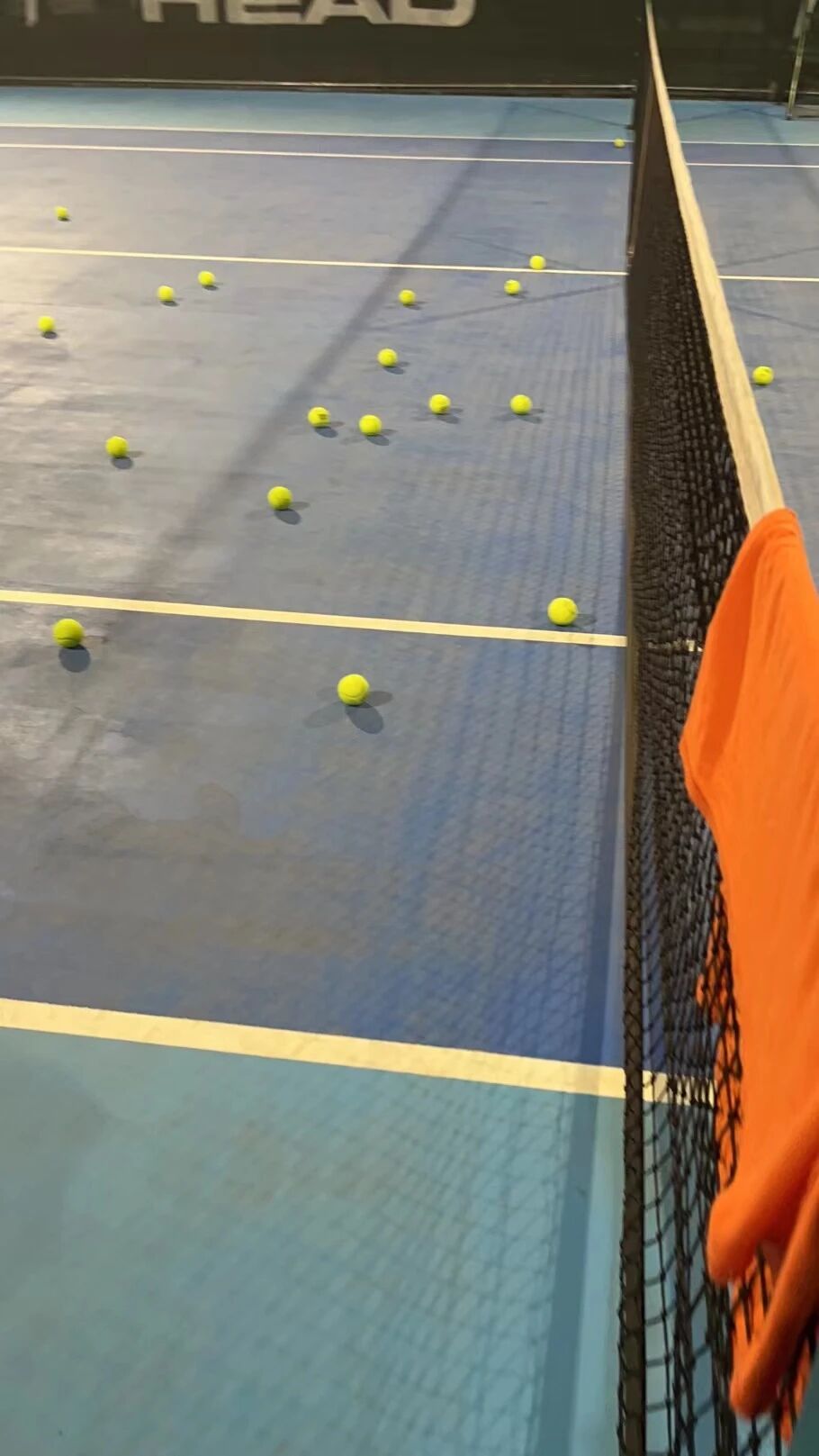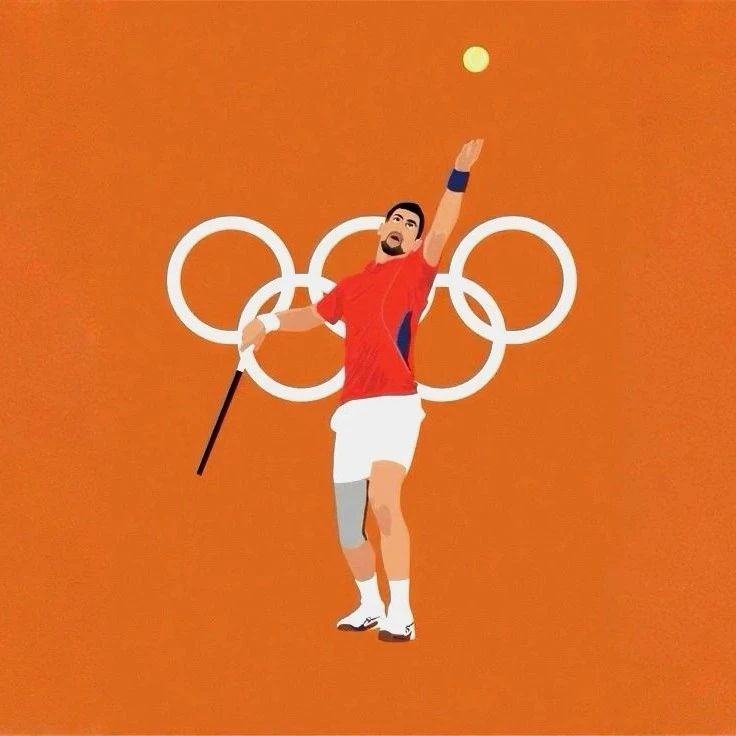Decoding "The racket face is an extension of the hand"
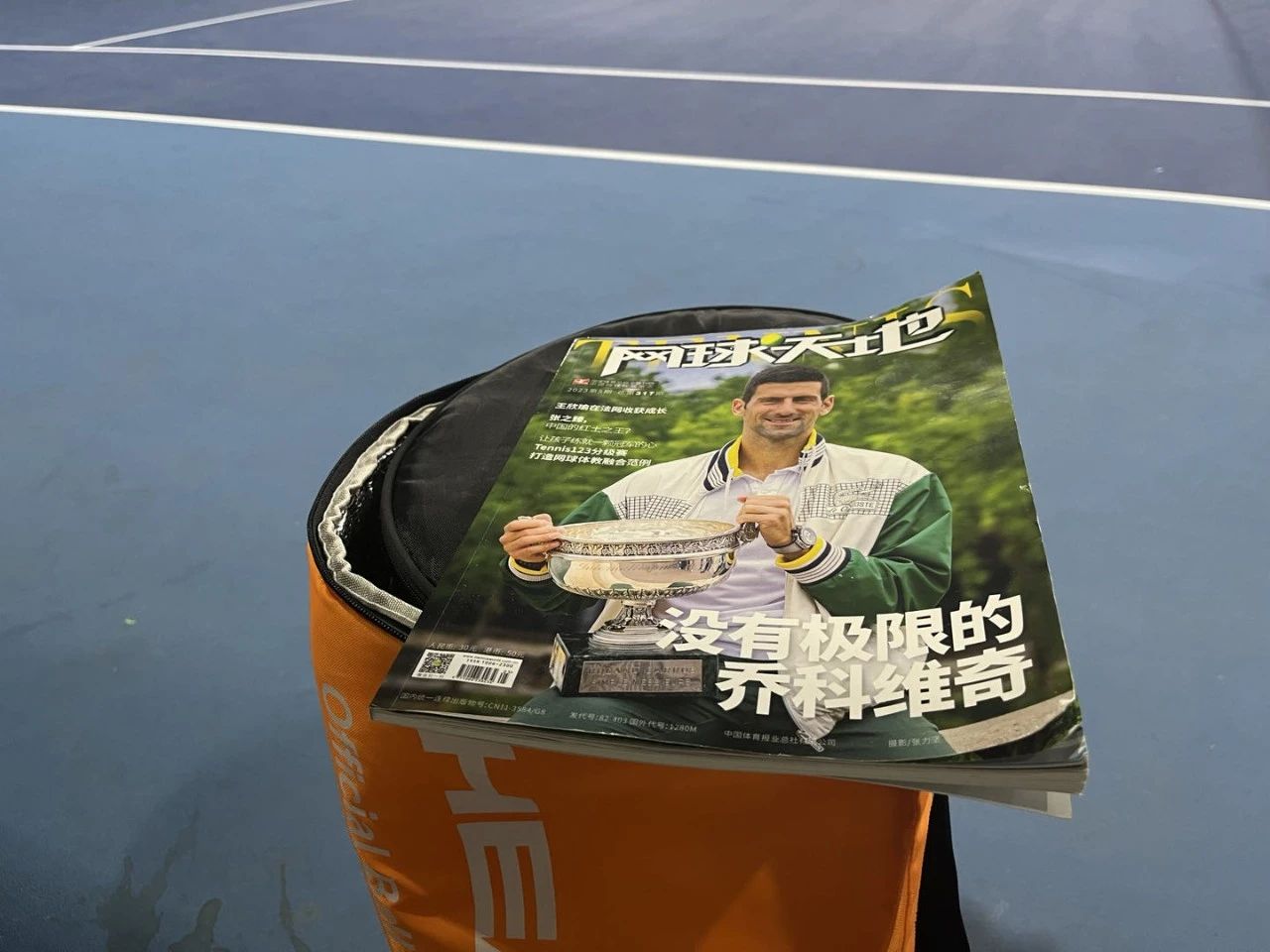

Thought shapes consciousness, consciousness guides behavior, and behavior determines outcomes. Ultimately, a learner's understanding of the teaching content will always reflect in their training results. Therefore, how to effectively help students grasp the meaning of these concepts is a question that educators must explore deeply.
When learning tennis, you might hear your coach say that the racquet face is an extension of your hand—and that you should match the racquet’s motion with the ball’s trajectory. However, due to the evolution of tennis equipment, this explanation can be challenging for most players to fully grasp.
To put it bluntly, the author took quite a winding path in understanding the phrase "the racket face is an extension of the hand." Early on, while learning the basics, I watched numerous tutorials focused on improving reaction skills—tutorials that emphasized reaching out to grab the ball after moving. As a result, I’d always assumed the hitting motion was all about catching—or even just lightly touching—the ball. It was with this lingering confusion that I initially struggled to imagine where the true joy of tennis might actually lie in its earliest days.
It wasn’t until one day, when I learned about the origins of tennis, that I realized how thoroughly the sport—its rules, equipment, strategies, and more—has evolved. The only constant, though, remains the very essence of the game: the impact of the ball.
If you play tennis without understanding "impact"—instead of instinctively using your racket to meet the ball—you’ll never truly improve. Deeply grasping the idea that "the racket face is an extension of your hand" is the key to mastering the essence of "impact." So, let me take you on a journey through the evolution of the tennis racket, revealing exactly why this principle matters.
From history
Tennis originated in Europe and was initially known as Jeu de paume (the palm-court ball game).
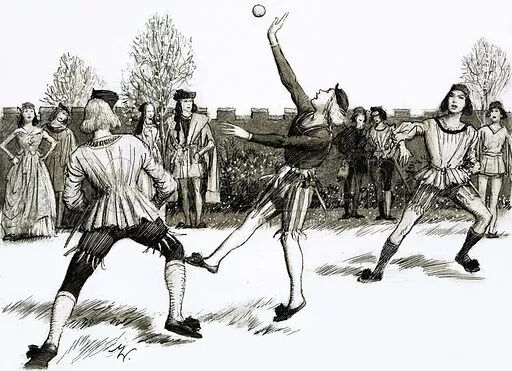
Handball: The Palm-Pounding Ball Game
The gameplay of Jeu de Paume—literally "hand palm game"—is incredibly intriguing: Keep your palm flat and firm, using the center of your hand for forehand strokes and the back of your hand for backhand shots. Of course, for right-handed players, a left-handed forehand can easily substitute for the traditional right-handed backhand.
With the palm stretched taut, a small "racket face" is created. Due to the unique "material" of the human palm, the author boldly speculates that this sport at the time could only rely heavily on flat hitting—making it nearly impossible to imagine using the flat, smooth palm to generate spin on the ball.
PS: Absolutely don’t try playing this game with a modern tennis ball. Early tennis balls were lightweight and incredibly soft, made from sheepskin stuffed with bits of cloth and wool—weighing in at just around 28 grams, about half the weight of today’s standard 55g tennis balls.
Striking a modern tennis ball with the palm fully extended is incredibly painful—luckily, I’ve already taken that hit for all of you. (lll¬ω¬)
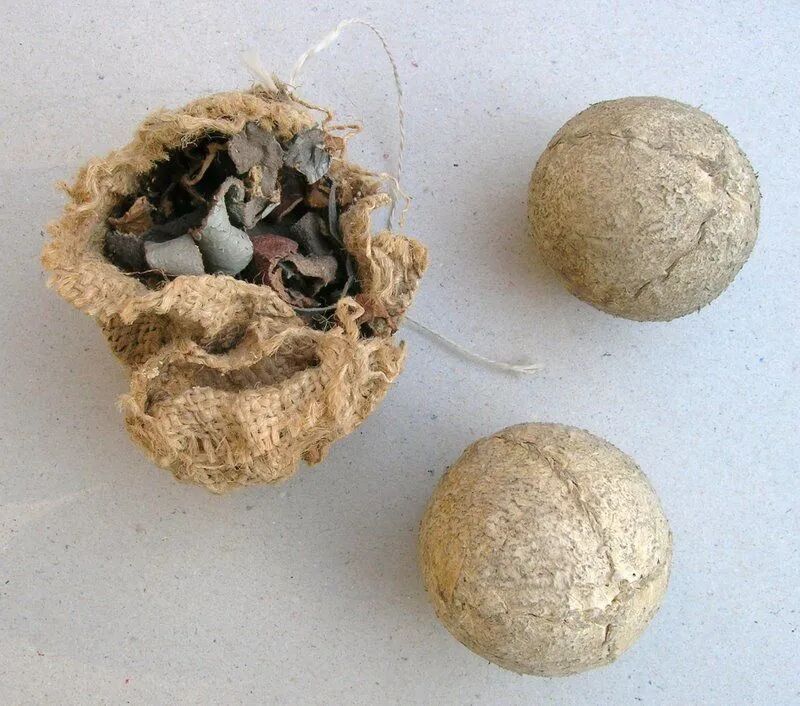
Tennis in Its Early Origins
Getting back to the point, since the very beginning of tennis, players have relied on the flat surface of the palm to strike the ball. The forward momentum comes from the impact itself, not from friction. This means it’s not enough simply for the "racquet face" to make contact with the ball—but rather, the actual collision occurs as the palm swings forward and meets the ball.
If we examine the movements of Jeu de Paume—the palm-court ball game—more closely, we’ll notice that the kinetic chain used in the forehand stroke of early tennis appears remarkably similar to that of modern tennis. Key techniques such as lowering the center of gravity, engaging the core while rotating the hips, and swinging the racket from the inside out are all still essential today. Just as in its origins, early tennis required players to harness their body’s power to rapidly accelerate the "palm"—the racket face—until it made contact with the ball at the hitting zone.
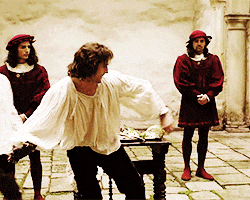
Side view of jeu de paume
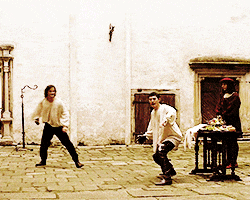
Palamatch front view
Understanding where tennis came from can help us better grasp where it’s headed, right? Either way, the "collision" remains the sport’s enduring allure.
The Evolution of Handle-Grip Rackets
Regarding the origins and evolution of the tennis racket, there are many theories since no definitive historical records exist. Among them, the most intriguing one suggests that during a certain period in Europe, gambling centered around tennis became incredibly popular. To gain an edge over their opponents—and ultimately win bets—players relentlessly sought ways to outperform their rivals, often focusing not just on skill, but also on gaining a competitive advantage through better equipment.
During the period when the palm served as the hitting surface, "rackets" had no handles—only flat surfaces—and the pivot point for swinging the racket was at the wrist joint. Whether early players wrapped their entire palms with bandages to prevent injuries from striking bare-handed, or even strapped wooden boards over their hands, they never moved away from the fundamental technique of hitting the ball by directly impacting it with the palm.
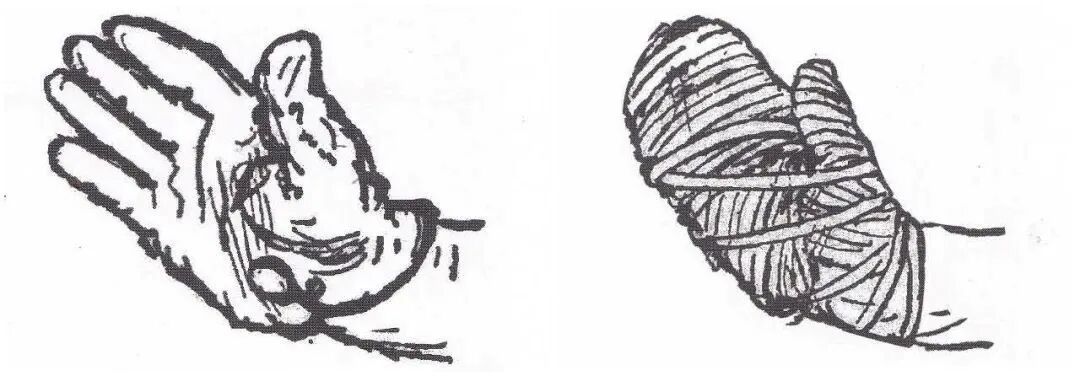
Wrap your palm with a bandage. Image source: Beijing Yunhui Tennis Museum
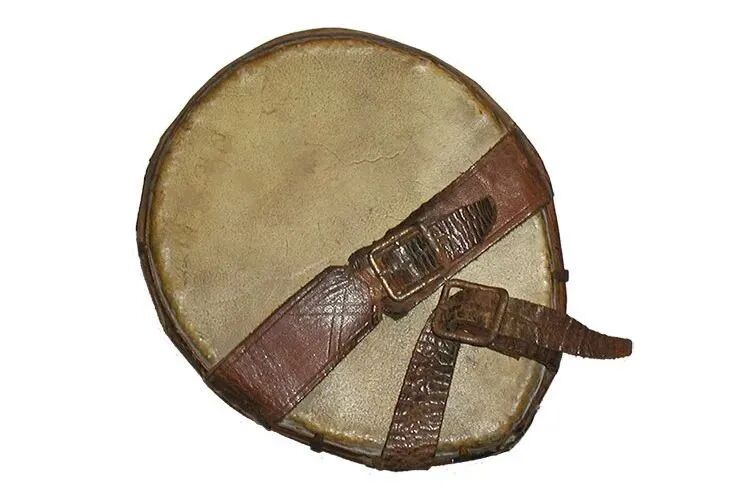
Wooden paddle gloves. Image source: Beijing Yunhui Tennis Museum
Even if the point of impact is right at your fingertips, using your wrist joint as the fulcrum still results in a too-short lever arm. So how can you extend that lever arm to gain an advantage? The solution: grip the handle firmly and stretch the racket face outward as far as possible.
Why were tennis rackets with combined racket faces and handles created?
(This section explains the principle; you may read only the yellow-highlighted part.)
We know that clubhead speed essentially describes the linear velocity V of the racket face as it moves through the hitting zone. When a player generates power from their body, the racket face experiences both angular and linear acceleration. Ultimately, the clubhead speed V is the combined result of the racket’s angular velocity ω and its linear velocity v1.
Head speed formula:
V = ωr + v1
Assuming the player's physical strength remains constant over a given period, the racket's final angular velocity ω and linear velocity v1 will also show no significant changes. Under this assumption, let’s revisit the racket-head speed formula: V = ωr + v1. Clearly, increasing the radius r is the optimal strategy for maximizing the racket-head speed V.
It’s not just tennis—every racket-based sport involving a hitting motion (like golf, baseball, and more) follows this principle: the farther the hitting zone is from the athlete’s body’s center of mass, the greater the acceleration effect on the hitting zone. As the saying goes, "An inch longer means an inch stronger"—and moving from the palm of your hand to the tennis racket marks a significant step in how technology is reshaping the advantages of modern tennis equipment.
Of course, there’s another common principle shared by all equipment-based racquet sports: the farther the hitting zone is from the athlete’s body’s center of balance, the weaker the body becomes at controlling the equipment. This means that rackets and clubs can’t simply be made infinitely longer—every equipment design ultimately involves a trade-off between maximizing the "hitting radius" and maintaining precise control. This principle is also highly practical, and we’ll explore it further in future discussions.
With the introduction of the handle-equipped racket, we can now reasonably explain the first layer of meaning behind "the racket face as an extension of the hand." To generate greater racquet-head speed, it’s essential to position the hitting surface away from the body. In this setup, the entire palm shifts its role—from directly impacting the hitting area—to serving as the "joint" that connects the racket to the player’s body.
During this period, hitting technique placed particularly strict demands on players' grip and wrist movements. With rackets offering poor face elasticity and minimal friction against the ball, even slightly off-center hits were met with very little tolerance. Imagine playing with today’s "sweet spot" rackets—back then, players had no choice but to swing powerfully; only by striking the ball with force would it gain enough momentum to move forward after colliding with the racket face.
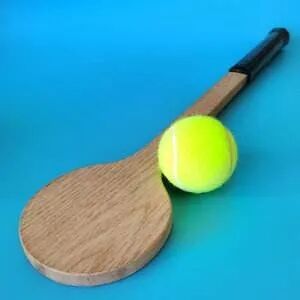
Modern "Sweet Treat Shots"
The Evolution of Stringing Rackets
The emergence of stringed racket technology marked the beginning of tennis players' spin-heavy playing style. With strings replacing flat racket surfaces, the elasticity and friction between the ball and the racket increased significantly.
Players create topspin or backspin by generating vertical relative motion between the racket face and the ball, produce sidespin by inducing horizontal relative motion, or combine both types of motion to generate even more complex spin shots.
While innovations in racquet technology have profoundly influenced the advancement of hitting techniques, in the era of strung racquets, the description "the racket face is an extension of the hand" has inadvertently shrouded tennis learners in a veil of "difficulty understanding."
From the perspective of racket performanceThe palm of a straightened hand and the flat surface of a racket face have roughly similar elasticity—both require a firm, forceful strike to impart forward motion to the tennis ball. Yet, when amateur players equip themselves with highly flexible racket strings that offer superior elasticity, they often benefit from lower string tension, allowing them to execute well-timed, spin-heavy "slice" shots effortlessly. While this approach may seem to provide decent control, misusing the equipment in this way can lead to a critical oversight: neglecting the fundamental essence of hitting—the actual collision between ball and string. As a result, players lose their proactive edge in matches, which is truly unfortunate. (If you spot an opponent who excels exclusively at playing slice-based shots, even if they remain steady when you unleash your speed-based weapons, you can still outmaneuver them by consistently targeting their weaker side with soft, low baseline shots.)
From the perspective of batting technique,The advancements in racket and string materials have expanded the sweet spot of rackets significantly, increasing their tolerance for off-center hits. Meanwhile, fluid, sweeping swing motions—once characterized by a smooth follow-through aligned with the target direction—are gradually being replaced by more aggressive, spin-oriented techniques, such as the "rain-scraper" forehand, allowing players to finish their swings in a variety of body positions. Beginners, often observing how advanced players execute their shots, may mistakenly misunderstand the true nature of hitting: instead of recognizing it as a simple collision, they tend to believe that friction between the racket and the ball plays the primary role in generating the return.
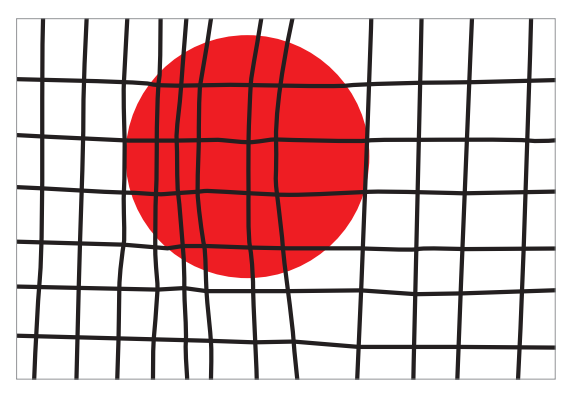
Simple diagram showing friction between the tennis ball and the string
Even as the racket face has evolved—from the "palm"—to the "flat-faced"—to the "stringed" racket, the fundamental principle of striking the ball remains unchanged. In other words, in the era of stringed rackets, although friction does play a role, the ball still needs sufficient impact and compression for that friction to effectively come into play.
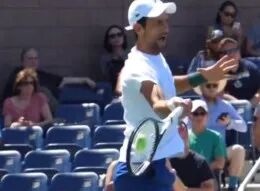
The tennis ball and racket collide, resulting in compressive deformation.
Thus, the second layer of meaning behind "the racket face is an extension of the hand" becomes clear: with the advent of strung rackets, the fundamental principle of hitting the ball with the racket face remains unchanged. Players can still leverage the elasticity of the racket face to deliver powerful, flat shots—after all, the increased friction between the strings and the tennis ball merely adds a few new features to the "hand" that originally defined the racket face in its earliest days.
Conclusion
Perhaps the seeds of "collision" were sown long ago, at the very birth of tennis. Over centuries of evolution in tennis equipment—from the hand to the racket—we can sense how generations of tennis players have tirelessly pursued the timeless quest: "How can we hit the ball better?" It’s all so intricate, yet utterly captivating.
Where do we come from, and where are we headed?
Continuous progress stems from constant reflection. We hope that after reading this article, you’ll develop your own insights into the concept of "the racquet face as an extension of the hand."
